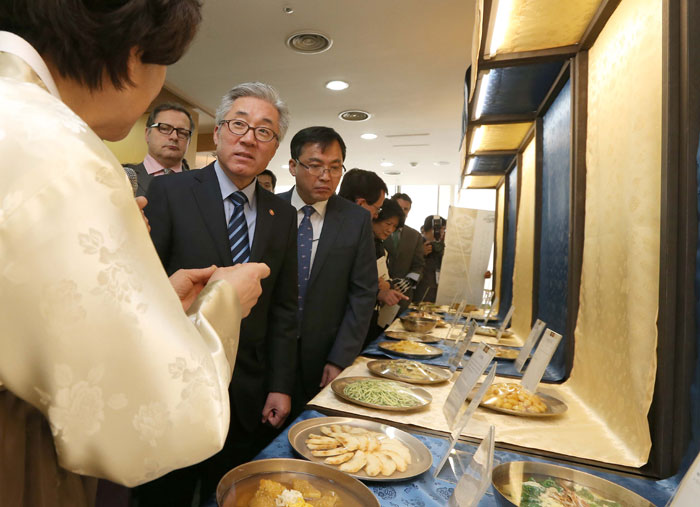
Attendees at the food tasting at Korea House in Seoul on March 25 listen to an explanation about the 'Eumsik Dimibang,' the first cookbook written in Korean.
Dishes made from recipes more than 340-years-old were showcased in Seoul on March 25.
These food items were made using the first cookbook ever written using the Korean alphabet, the "Eumsik Dimibang" (음식디미방, 飮食知味方). The book contains recipes, as well as instructions on how to store and ferment many foods eaten by the noble classes in Gyeongsang-do (Gyeongsang Province) during the 17th century. The “di” in “Dimibang” is an old Korean word for “ji” (지, 知), which means, "knowing." The title of the book, therefore, means, "a way of knowing the taste of food."
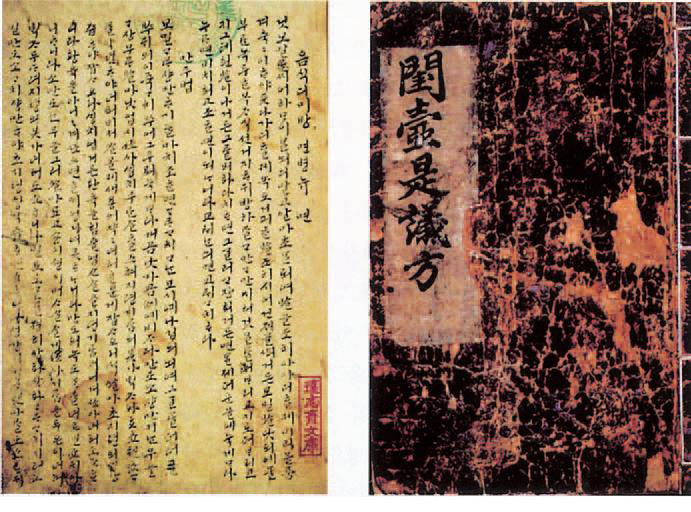
The 'Eumsik Dimibang' is a cookbook written in the 17th century
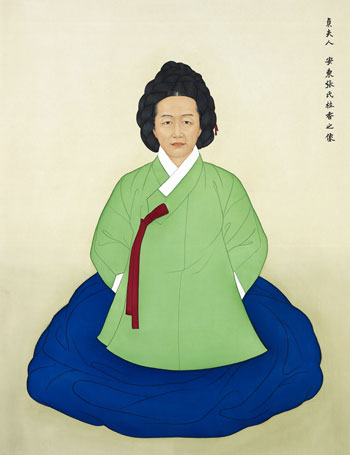
A portrait of Jang Gye-hyang, the author of the 'Eumsik Dimibang.'
The author of the book is Jang Gye-hyang (1598-1680) and she wrote it during her later years. She was the eldest daughter-in-law of a leading noble family in Yeongyang, Gyeongsangbuk-do (North Gyeongsang Province). Aside from its historical importance, the practical value of the book is widely recognized, as it contains detailed recipes for up to 146 menu items, including noodles, dumplings, seafood, meats, vegetables, soups, beverages and it even has instructions on how to use cooking utensils, too.
Attendees at the food tasting held at Korea House in Jung-gu District, Seoul, included Minister of Culture, Sports and Tourism Kim Jongdeok, U.S. Ambassador to Korea Mark Lippert and French Ambassador to Korea Jerome Pasquier. They tasted nine exemplary food items prepared by Jo Gwi-bun, the 13th eldest daughter-in-law of the Seokgye Jongga, the leading family of Joseon-era scholar Seokgye Yi Si-myeong (1590-1674). The dishes on the table were daegu kkeopjil nureumi, sujeunggye, gajeyuk and gamhyangju.
The participants showed a strong interest in reproducing the recipes based on a cookbook written more than 300 years ago. One of them said that, “This is the new taste of Korea we never experienced before.”
Both domestic and international tourists in Korea can taste the food made according to the "Eumsik Dimibang," as it will be on sale at Korea House starting this April.
By Yoon Sojung
Korea.net Staff Writer
Photos: Ministry of Culture, Sport & Tourism, Korea Tourism Organization
More information about the "Eumsik Daimibang" is available at its related homepage: http://dimibang.yyg.go.kr
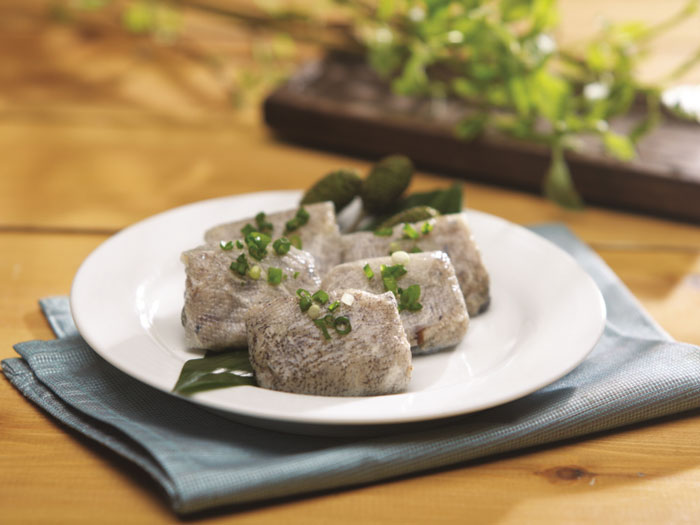
The above dish, daegu kkeopsil nureumi, is made with cod that has had its skin removed. Mushrooms, such as finely chopped manna lichen and shitake mushrooms, and finely shredded pheasant meat are used to fill the inside of the cod before being boiled in hot water.
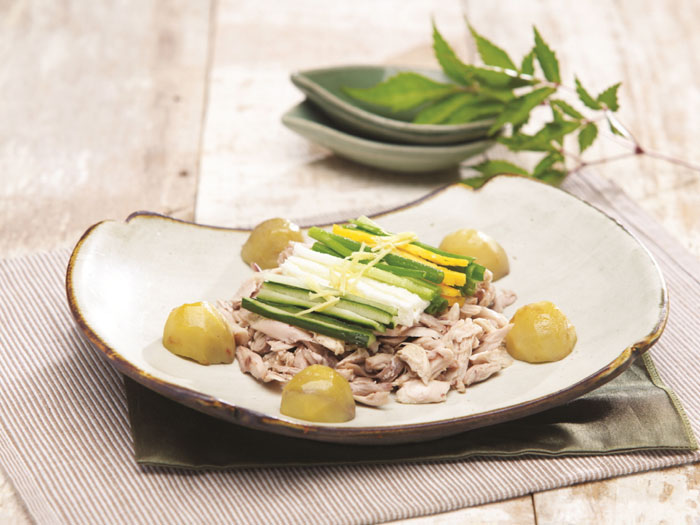
Sujeunggye is made from shredded chicken which was fried and boiled. It is consumed with bits of taro, soy sauce, green herbs, cucumbers, ginger and eggs.
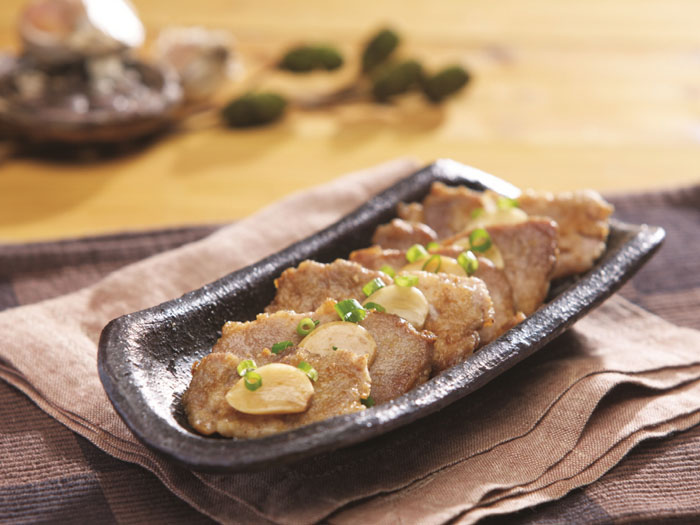
Gajeyuk is a pork dish. It is made with thick-sliced pork marinated with oil and soy sauce. It is then covered with flour and seasoned with black pepper.
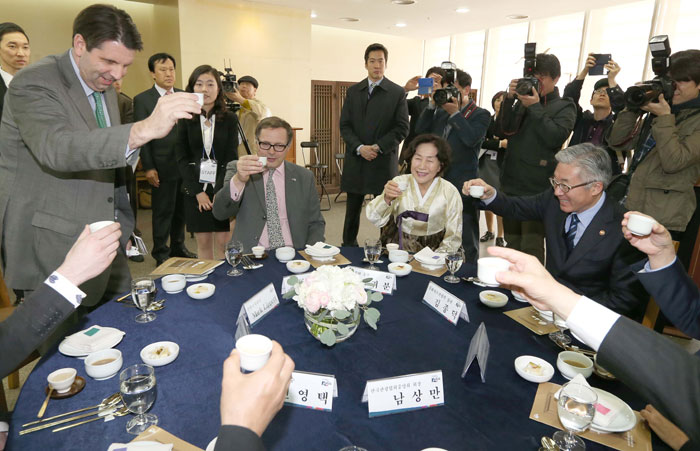
Minister of Culture, Sports and Tourism Kim Jongdeok (right) raises his glass with other attendees at the food tasting, as U.S. Ambassador to Korea Mark Lippert (left) proposes a toast. The beverage drunk in the toast is gamhyangju, a traditional liquor made from both non-glutinous and glutinous rice.
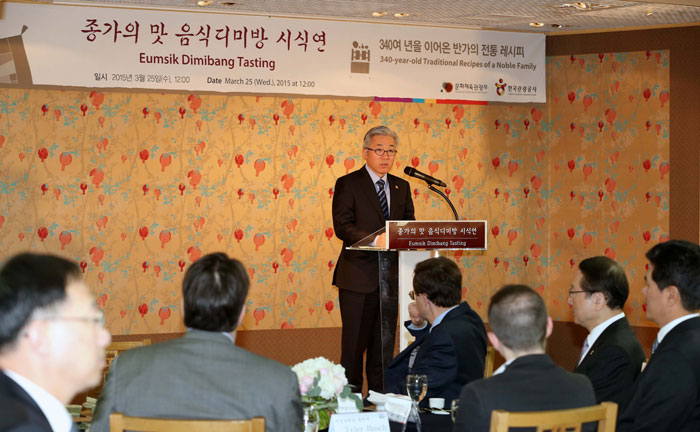
Minister of Culture, Sports and Tourism Kim Jongdeok delivers his congratulatory remarks at the 'Eumsik Dimibang' recipe tasting.